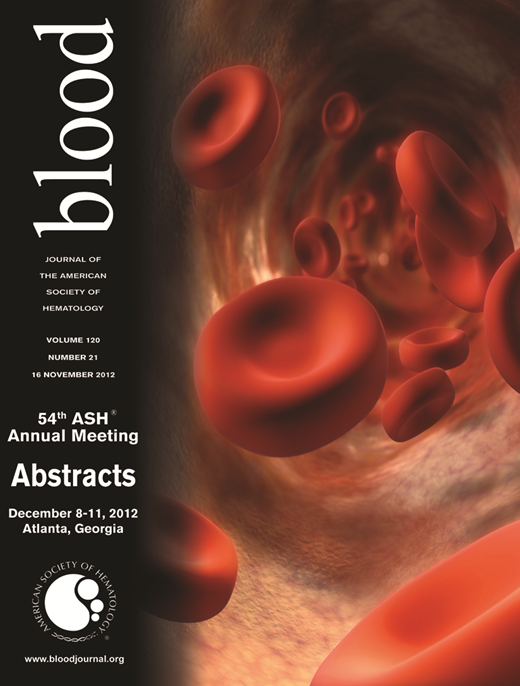Abstract
Abstract 4855
Peripheral T-cell lymphomas (PTCLs) are a rare and heterogeneous group of non-Hodgkin lymphomas, often resulting in poor prognoses. The CHOP chemotherapy regimen, which includes cyclophosphamide, doxorubicin, vincristine, and prednisone, had been used previously to treat other types of lymphomas. Here, we examined the efficacy and safety of a dose-intensified CHOP regimen (Double-CHOP), which was followed by autologous stem-cell transplantation (ASCT) or high-dose methotrexate (HDMTX), in PTCL patients.
Twenty-eight PTCL patients, who received 3 courses of Double-CHOP at our institution, were retrospectively studied from 1996 to 2012. Patients with anaplastic lymphoma-kinase-positive anaplastic large-cell lymphoma (ALK+–ALCL) were excluded from this study. The Double-CHOP regimen consisted of 3 courses of intravenous (iv) administration of cyclophosphamide (750 mg/m2, days 1–2, over 2 h), doxorubicin (50 mg/m2, days 1–2, over 30 min), vincristine (1.4 mg/m2, day 1, max 2 mg/Kg body weight), and per os (p.o.) prednisone (50 mg/m2, days 1–5). For patients aged >60, cyclophosphamide and doxorubicin doses were modified. The third cycle of Double-CHOP regimen was used for stem cell mobilization. Consolidating high-dose therapy (HDT) regimen consisted of cyclophosphamide (60 mg/kg, day 6 and 7, iv, over 3 h), etoposide (500 mg/m2; day 4, 5, and 6; iv; over 6–8 h), and ranimustine (250 mg/m2, day 2 and 3, iv, over 1 h). ASCT was performed on day 0 and G-CSF administered from day 1 until neutrophil engraftment. As an alternative to HDT/ASCT, HDMTX (8 g/m2, day 1, iv, over 4 h) was indicated for patients who could not yield a sufficient number of stem cells or were ineligible for HDT/ASCT.
Patients' median age was 58 years (range: 17–69). They had low-intermediate (n = 11), high-intermediate (n = 10), or high (n = 7) risk according to the International Prognostic Index (IPI). The overall complete remission (CR) rate following Double-CHOP treatment was 68%. Of all the CR patients, 10 could successfully tolerate a consolidated HDT followed by ASCT, and 7 received HDMTX. Only a single case of treatment-related mortality was recorded during the study. On a median 31-month follow-up, the estimated 3-year overall survival (OS) rate and 3-year relapse-free survival (RFS) rate after CR were 68% and 60%, respectively.
Although this study included elderly and excluded low-risk IPI and ALK+–ALCL patients, both RFS and OS results were superiorly favorable, indicating the efficacy of this Double-CHOP regimen and Double-CHOP followed by ASCT/HDMTX consolidations is safe and may achieve prolonged EFS, especially in patients with poor prognostic factors. However, an effective treatment strategy for refractory or relapsing patients needs to be validated and established.
No relevant conflicts of interest to declare.
Author notes
Asterisk with author names denotes non-ASH members.

